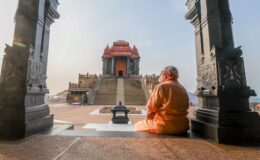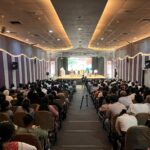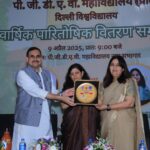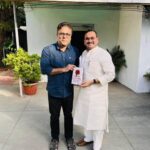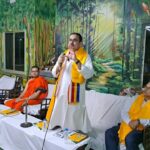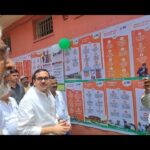Lokmanya’s Legacy – a renewed awakening
- By : Anirban Ganguly
- Category : Articles
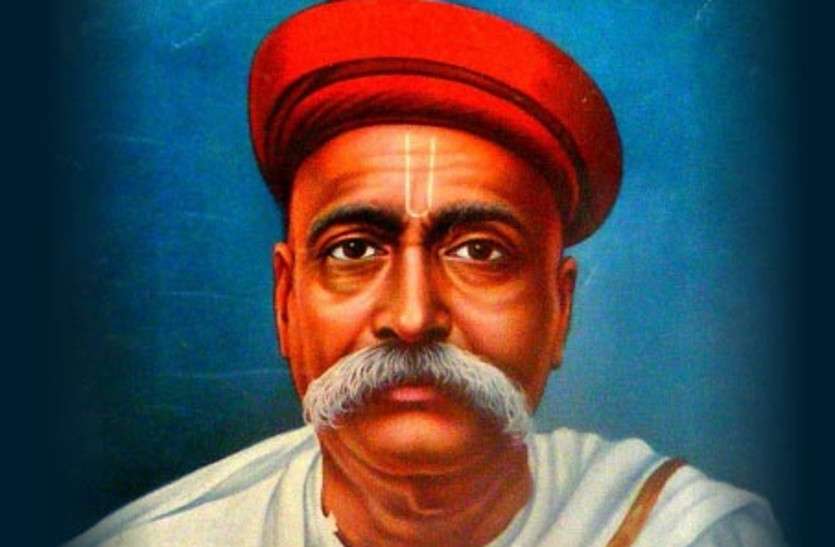
“Swami Vivekananda received us very cordially. We took tea. In the course of the conversation Swamiji happened to remark somewhat in a jocular spirit that it would be better if I renounced the world and took up his work in Bengal while he could go and continue the same in Maharashtra. ‘One does not carry’, he said, ‘the same influence in one’s province as in a distant one’, recalled the Lokmanya of his last meeting with Swami Vivekananda, in the precincts of the sacred Belur Math. Tilak was attending the 17th session of the Congress in Calcutta, in December 1901 and had gone with “some friends to see the Belur Math of the Ramakrishna Mission.”
As a yet unknown parivrajaka monk trying to figure out how India could be shaken and awakened from her stupor of a lethargic reverie induced by an ensnaring political and cultural bondage, the Swami, in his peregrinations across India, had in fact stayed for about ten days as a guest of the Lokmanya. Recalling those days, Tilak would also note how, the Swami, like him, felt that “Shrimad Bhagavad Gita did not preach renunciation but urged everyone to work unattached and without the desire for the fruits of the work.” It was this pragmatism, grounded in a profound and unalterable cultural sense that India symbolised, an awakened spiritual side which blended with an intense and intellect and political vision and action which had India as its centre, that made Tilak stand out among his contemporaries and made them utter words as did Swami Vivekananda. Not for anyone else had Vivekananda perhaps reserved such words and offer. The jocular words implied Tilak’s own potential beyond politics, it also hinted at his grip over the masses, his capacity for a down-to-earth dissemination among them of complex political ideas and aspirations.
Sri Aurobindo, one of his closest political collaborators in the early phase of revolutionary nationalism, describes this defining aspect Tilak’s political personality that made him stand apart, “one who can both awaken the spirit of the mass and respond to their spirit, able to lead them, but also able to see where he must follow the lead of their predominant sense and will and feelings. He moves among his followers as one of them in a perfect equality, simple and familiar in his dealings with them…He has that faculty of plain and direct speech which interprets their feelings…For this reason he has been able to unite all classes of men behind him, to be the leader not only of the educated, but of the people, the merchant, the trader, the villager, the peasant…” Pre-eminent historian of the freedom movement, R.C.Majumdar, for instances, contextualises this when he argues that Tilak “brought political philosophy in India from heaven to earth, from the Council Hall or the Congress mandap to the street and the market…”
This found expression through a relentless and exacting cycle of activities – political, social, cultural, intellectual, educational and spiritual – and was supported by a seemingly inexhaustible reserve of energy and dynamism that the Lokmanya exuded. While his adversaries in the Raj, labelled him as the “Father of the Indian Unrest”, the peoples’ honorific conferred on him was that of “Lokmanya.” It succinctly described, how he, much long before the mass politics of the Gandhian kind was in vogue, already had a grassroots reach and command.
Union Home Minister Amit Shah, referred to these dimensions while inaugurating an international conference as a tribute on the centenary of the Lokmanya’s death. Shah pointed out how Tilak had assimilated all these dimensions – cultural, social, political, spiritual – in his personalities and referred to how, he had been the originator in a sense, of the idea of organising festivals as instruments for political and social mobilisation. The Hindu Mela organised by the likes of Nabagopal Mitra and Rishi Rajnarayan Bose, in the past, focused on specific Hindu awakening, while Tilak’s Shivaji and Ganesh festivals, had a deeper, more sustained and long-term political focus and intention and acquired a wide popularity. In fact, the Shivaji festival also acquired great popularity among the early Bengali revolutionary nationalists. Writing in The Maratta on 24th June, 1906, Tilak, described the deeper intention behind the Shivaji Festival, it was not aimed against any community, it was rather meant to rekindle the ‘spirit’ that drove and led Shivaji in his quest for Swaraj, “No one ever dreams that every incident in Shivaji’s life is to be copied by any one at present. It is the spirit which actuated Shivaji in his doings that is held forth as the proper ideal to be kept constantly in view by the rising generation.”
The Shivaji Festival elicited a popular response in Bengal. With some of the leading nationalists of the era taking lead in organising it, such as Raja Subodh Chandra Mallik, benefactor of the national education movement in Bengal, Brahmabandhab Upadhyay editor of the fiery Sandhya, Motilal Ghose, editor of the nationalist Amrita Bazar Patrika, among others, taking lead in organising it. On 4th June 1906, the Shivaji Festival and an exhibition of Swadeshi goods took off to a grand start in Kolkata, with Tilak himself, G.SKhaparde, Dr B.S.Moonje, Aswini Kumar Dutt in attendance. While inaugurating the Shivaji Festival Tilak addressed huge a gathering and declared the celebration “a political festival.” Tilak told the large gathering at the heart of Kolkata, that the “The words Bande Mataram, are now inscribed on the temple of Shivaji at Ratnagiri. The Shivaji Festival is an inspiring political festival which must spread all over India. The Goddess Kali is the presiding Goddess in Bengal, the same Goddess was the protector of Shivaji. We cannot conceive of Shivaji without Bhawani.”
It was the quartet of Sri Aurobindo, Lokmanya Tilak, Bepin Chandra Pal and Lala Lajpat Rai, which overturned the Congress’s policy of mendicancy, liberated the movement from the control of a hesitant “moderate” coterie and emphasised the need to transform it into a mass based, people-centred flow that would reflect the collective aspiration for freedom. In a sense, this was the first subaltern assertion within the Congress movement, the urge to democratise it, to broad-base and to impart to it a cultural, educational and industrial dimension that could collectively reflect the multi-dimensional aspirations of a people, awakening to the possibilities of freedom. It was because of this Quartet that India’s quest for freedom became multi-layered and the ground for the Gandhian phase of mass movements prepared.
It was at the 22nd Congress, again at Calcutta in 1906 that the nationalist Quartet asserted itself and for the first time resolutions in favour of Boycott, Swadeshi, Swaraj and National Education were pushed through. One of the finest historian-duo of the early nationalist phase, Uma and Haridas Mukherjee describing the Calcutta Congress of 1906, with Dadabhai Naoroji as president, write of how despite the misgivings and hesitations of the elder lot of leaders, these resolutions saw the light of day for the first time, “marking a definite advance in India’s way to political progress.” While the old guard’s stand was “limited to Self-Government of the type of self-governing British Colonies”, the Quartet stood for “absolute independence or unqualified Swaraj for India.” These resolutions proved to be a decisive inflection point in India’s struggle for freedom. It was after the Congress of 1906 and its watershed shift that Tilak undertook a “whirlwind tour” to present before the masses the new doctrines of Boycott, Swaraj, Swadeshi, and National Education.
In his earthy, forceful and yet direct style, the Lokmanya spread the tenets of the new party, “Your industries are ruined utterly, ruined by foreign rule: your wealth is going out of the country and you are reduced to the lowest level which no human being can occupy. In this state of things, is there any other remedy by which you can help yourself? The remedy is not petitioning but boycott. We say prepare your forces, organise your power, and then go to work so that they cannot refuse you what you demand. A story in Mahabharata tells that Sri Krishna was sent to effect a compromise, but the Pandavas and Kauravas were both organizing their forces to meet the contingency of failure of the compromise. This is politics. Are you prepared in this way to fight if your demand is refused? If you are, be sure you will not be refused ; but if you are not, nothing can be more certain than that your demand will be refused, and perhaps, for ever We are not armed…We have a stronger weapon, a political weapon, in boycott…Self-Government is our goal ; we want a control over our administrative machinery…”
In Tilak’s political action, R.C. Majumdar discerned, “four chief characteristic features”, the first was a ‘sincere love and devotion for the past culture of the country, and the belief that all future development must be based upon this stable foundation”, the second was an emphatic assertion on the need to “assert our rights even at the cost of great sacrifice, before we can hope to achieve substantial measure of self-government”, third, was his clear articulation for self-government or Swaraj as “our ideal rather than reforms in the administration” and fourth was his carrying to the masses, the “gospel of self-help and political agitation.”
Yet beyond the practicalities of the struggle for independence, Tilak saw the quest for Swaraj, like the other members of the Quartet, as a deeply spiritual quest. He described it once publicly, “Swaraj is the natural consequence of diligent performance of duty. The Karma Yogin strives for Swaraj, and the Gnyanin or spiritualist yearns for it. What is then this Swaraj? It is a life centred in Self and dependent upon Self.”
In trying to understand the Lokmanya’s continuing relevance and the persistence of his legacy, it is to Sri Aurobindo thus that we must necessarily turn. Referring to his legacy, Sri Aurobindo movingly writes, “Tilak’s name stands already for history as a nation-builder…a name to be remembered gratefully so long as the country has pride in its past and hope for its future…”
In our quest for an Aatmnirbhar Bharat, in our strivings for a New India – which is now rekindling a spontaneous and deep-rooted pride in our past and generating a sturdy confidence for our future – we thus discern, a hundred years after his passing, a renewed awakening of the Lokmanya’s legacy’s.



